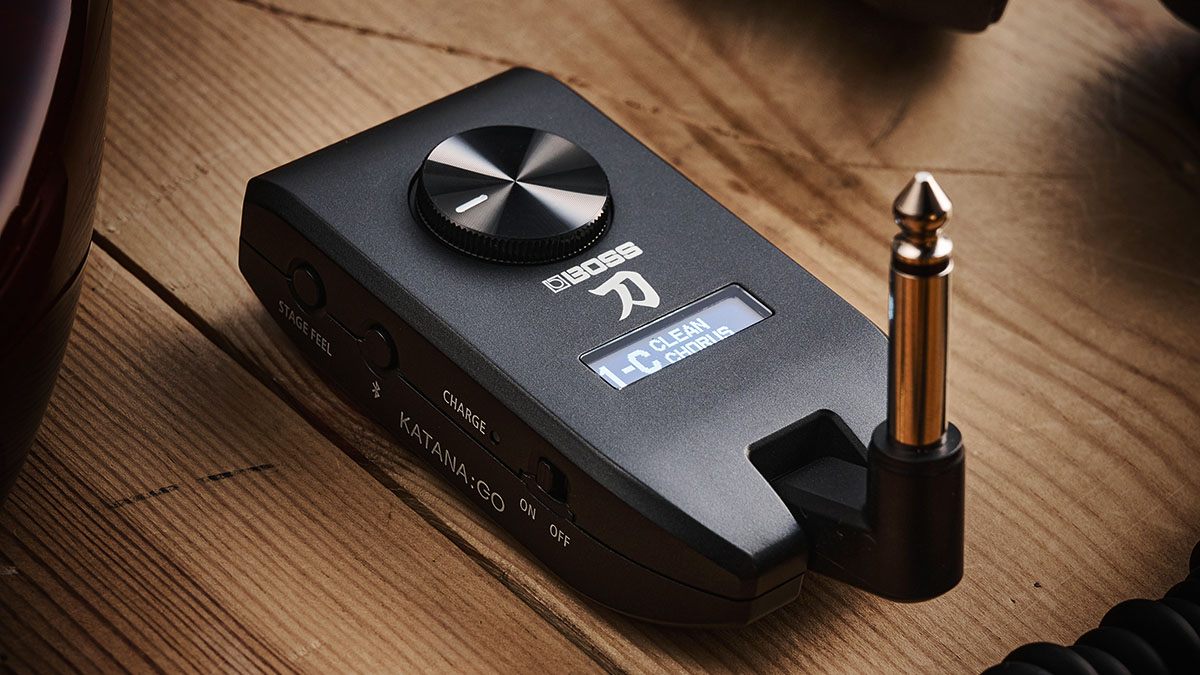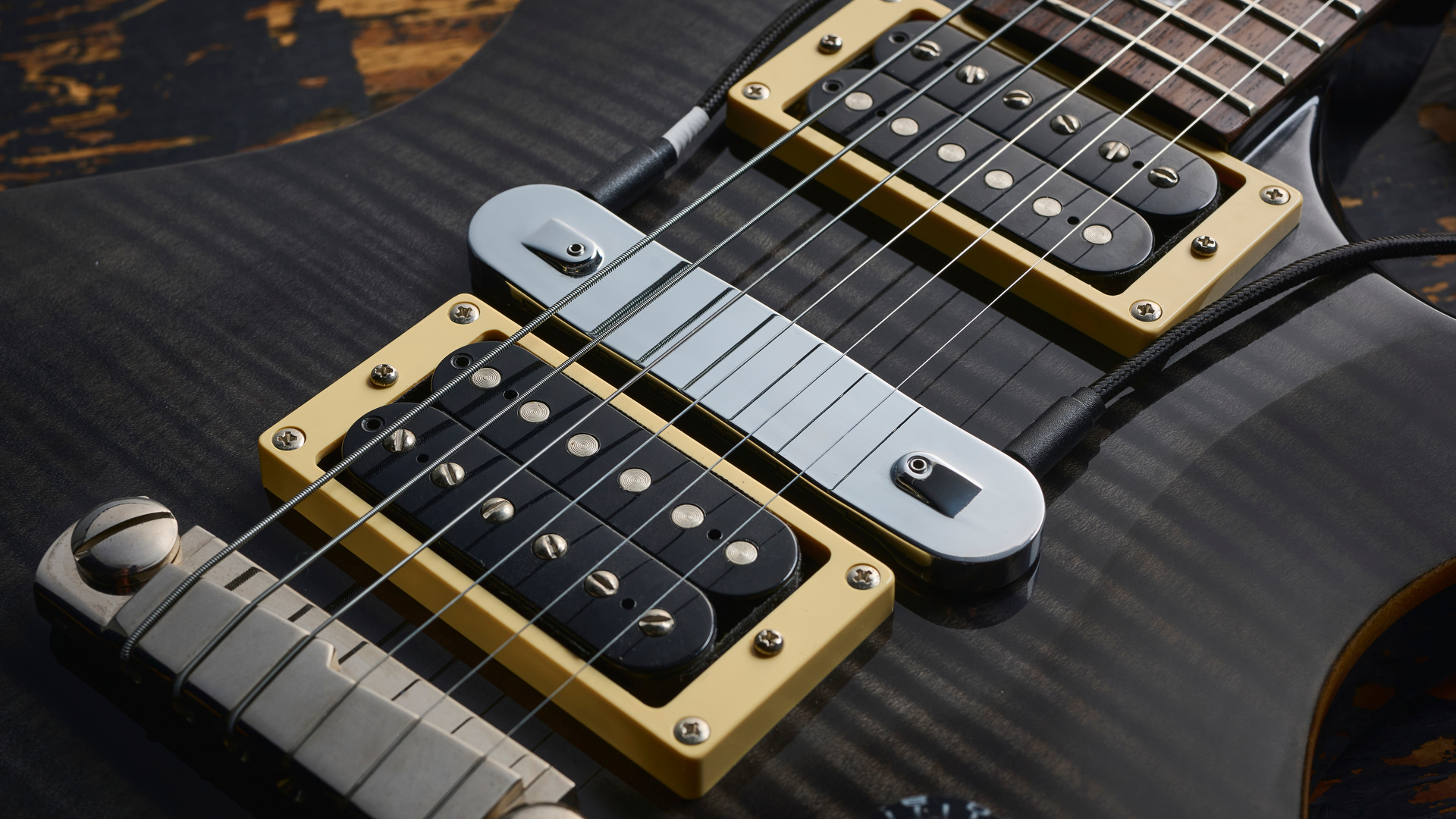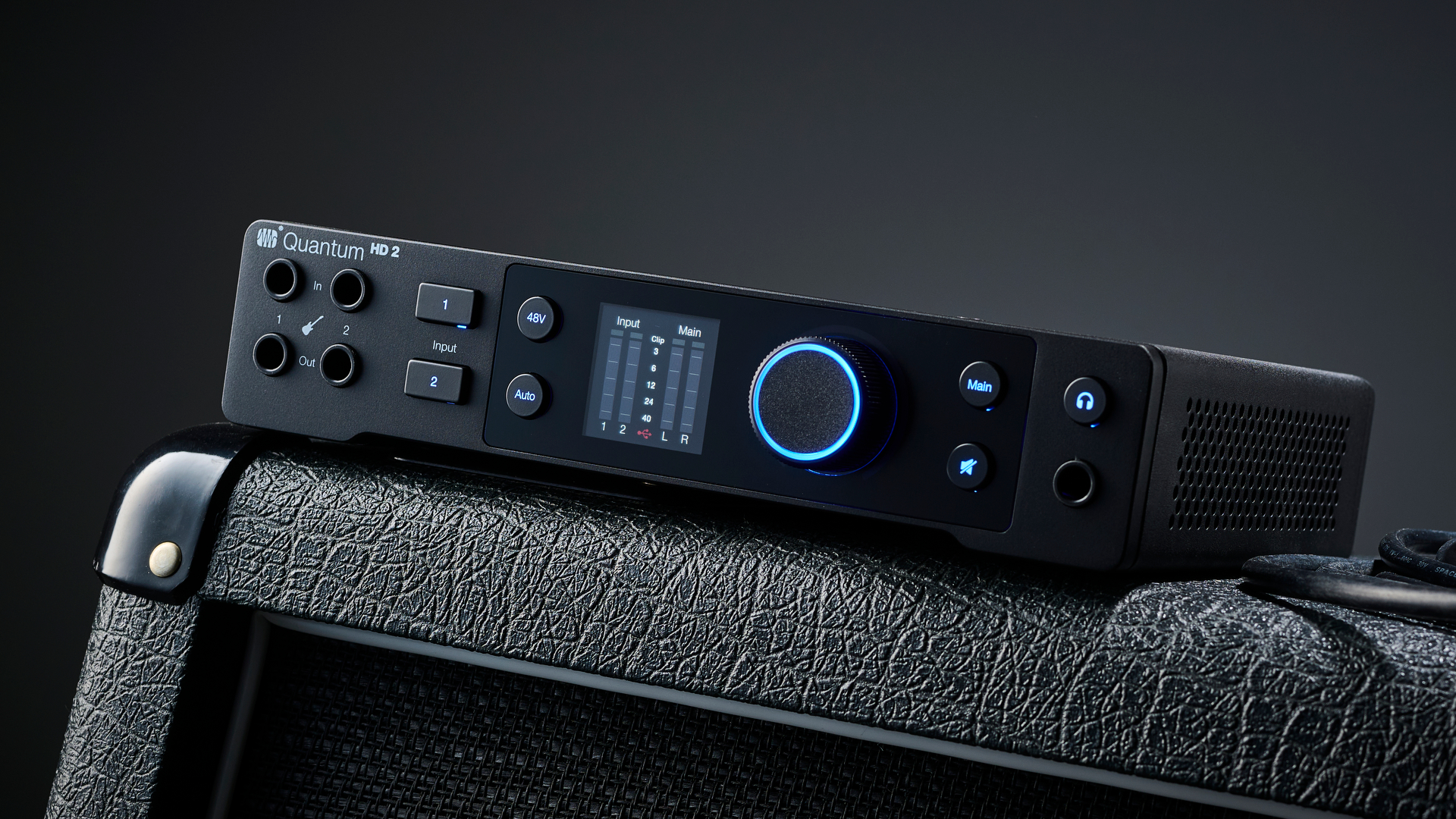Guitar World Verdict
The technology that’s on offer in the Katana:Go is so much fun and so inspiring, it’s a steal at the asking price.
Pros
- +
Impressive amp tones to suit all kinds of headphones.
- +
USB recording and audio streaming from Tone Studio app. Remote control storage.
- +
The price.
Cons
- -
Side-mounted performance switches aren’t so accessible.
- -
Not immediately great on some headphones, but the powerful EQ can correct that in seconds.
You can trust Guitar World
The near-universal popularity of Boss’s Katana range shows no sign of slowing down, with a full range of affordable digital amplification covering every need – from big stages and arenas, to pubs, clubs and the home. The latest product to bear the Katana name, the Katana:Go headphone amplifier, is the smallest yet and likely to become another success story for Boss.
The Katana:Go is small enough to fit in your pocket and exquisitely designed, with the same attention to detail lavished on all Boss products. As you might expect, it’s not exactly bristling with knobs and switches, and yet the various small buttons and volume-control wheel handle everything you might need, and they’re intuitive to use so after a while you don’t really need to look at them any more.
On the lower side, from a plugged-in perspective, you’ll find an on/off switch with a charge indicator LED that glows red when the battery is low, amber when charging, and green when fully charged. Two more button switches manage the Katana:Go’s Bluetooth connection and a Stage Feel 3D ambience effect.
On the opposite side, nearest the player when plugged in, there’s a Bank Up/Down switch that also operates the tuner, together with three patch selection buttons labelled A, B and C. On the top face is a small monochrome display and the volume control, with a 3mm stereo jack socket for your headphones and a USB-C socket on the back face.
The integral jack plug is hinged and folds to accommodate angled and straight jack sockets, covering practically all guitars. Thoughtful soft pads on the underside protect your guitar’s finish.
The key to the Katana:Go’s power is software, rather than hardware. A specially designed version of Boss’s Tone Studio app connects via Bluetooth and lets you access the five famous Katana guitar amp voices, each with a second variation. EQ controls include Bass, Middle, Treble, Presence and Cabinet Resonance, this last one with a choice of Deep, Vintage and Modern modes.
There are dozens of effects to choose from, covering all the bases you might need in the overdrive, distortion, modulation, delay and reverb departments, plus seven different signal chains to arrange them in.
There’s also not one but two parametric EQs and a noise gate, with yet another global EQ lurking in the system settings. The Katana:Go also unleashes 3D audio in its clever Stage Feel mode, which gives you the impression of playing in a room, either in a hall or a studio, with your virtual amp in front or behind, plus a custom setting you can tweak.
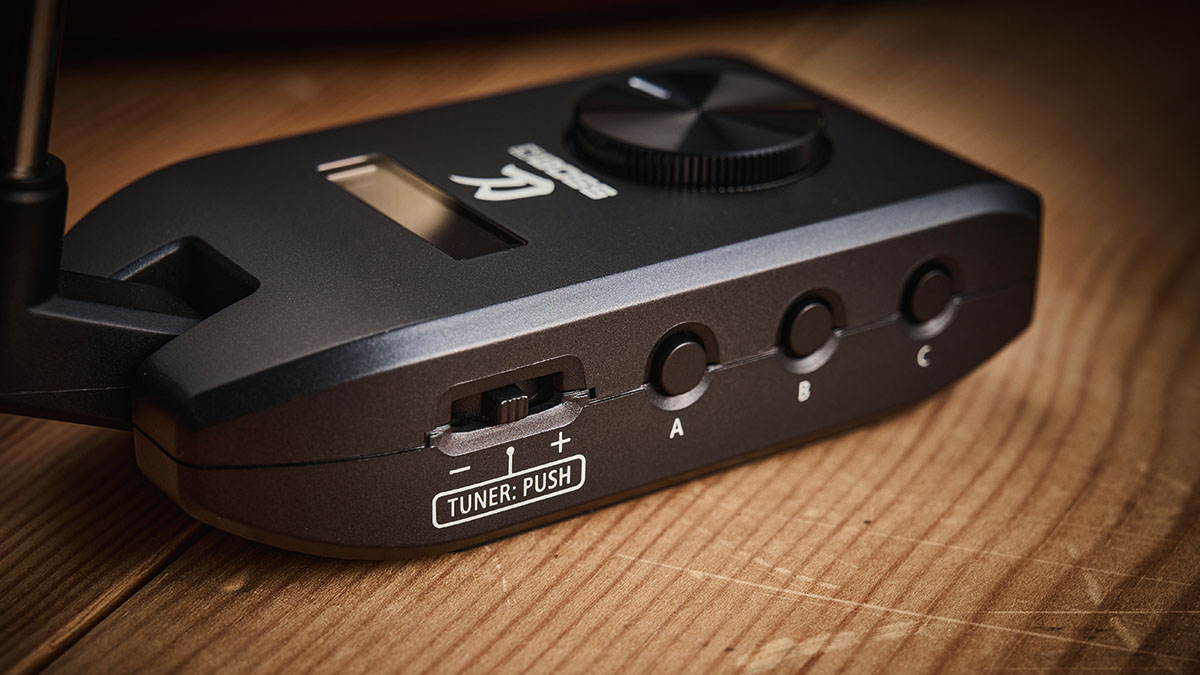
You can use the Tone Studio’s Session List feature to load and play music from your mobile device or YouTube, and arrange songs in your favourite order, as well as assigning your favourite patches to play along with them.
Roland account holders can make full use of the Boss Tone Exchange to browse and download from thousands of Liveset patches uploaded by users from all over the world; the Katana:Go is compatible with Livesets created on the Mk1 and Mk2 Katana amps.
Are we finished? Nowhere near. This feature-packed device also offers high‑quality USB streaming and recording to your mobile device or desktop, is compatible with the Boss wireless expression pedal and footswitch, and operates in either Guitar or Bass mode.
In use
The Katana:Go’s onboard memory holds 30 patches (or 60, if you count the bass mode) that are arranged in 10 banks of three. Soft-touch button switches on the side nearest the player scroll through the banks and select the individual patches, with a useful tuner function if you push in the Bank Up/Down switch.

In guitar mode, you can pick or choose from Acoustic, Clean, Crunch, Lead or Brown amp voices, each with a variation and a regular EQ layout. Swapping into bass mode gives you a choice of bass-optimised Vintage, Modern or Flat amp voices, each with a Shape option, while the amp EQ defaults to a semi-parametric configuration, with swept low and high mid controls and shelving treble and bass.
The effects are the same as the larger full-sized Katana amplifiers and there are dozens to choose from
We used our regular Strat and Les Paul guitars, together with standard mobile phone wired earbuds and a decent mid-priced closed ear studio-type headphone for comparison.
The ‘out of the box’ EQ sounded somewhat fizzy with too much top-end for the small earbuds, but it was warmer and more relaxing to listen to on the studio headphones. The Katana:Go’s global EQ is the solution here, making it quick and easy to dial the amp into your favourite pair of speakers.
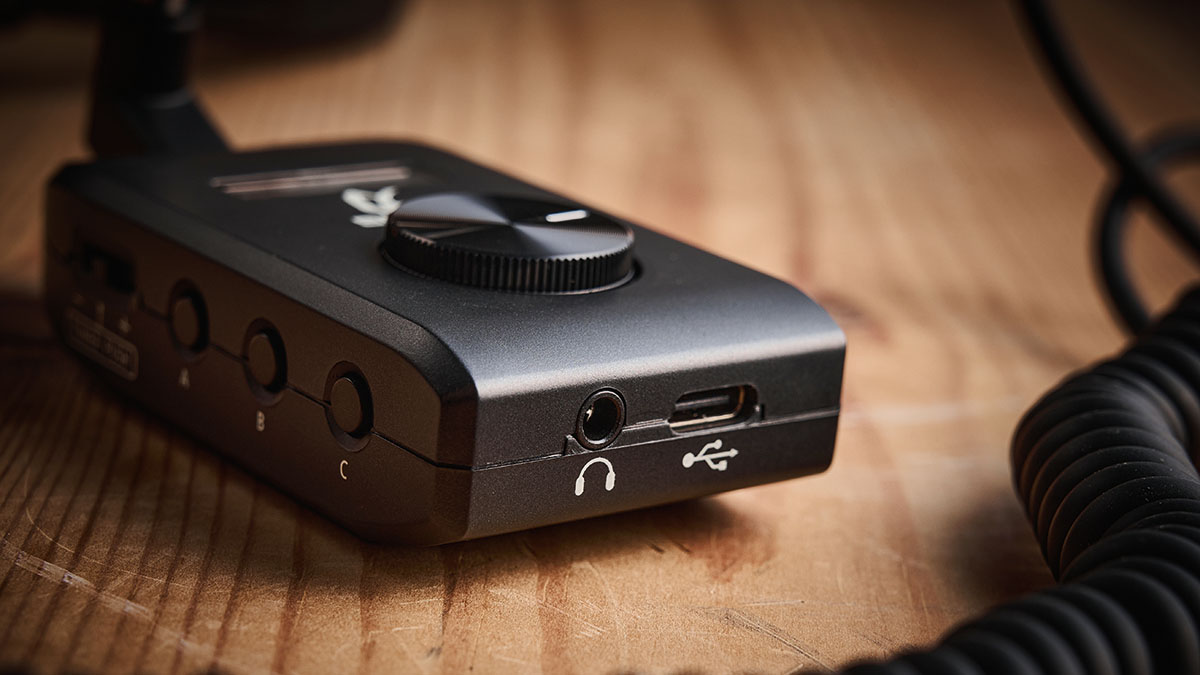
The effects are the same as the larger full-sized Katana amplifiers and there are dozens to choose from, including popular staples such as chorus, flange and phasing alongside wilder options such as the Slow Gear reverse effect and the Slicer, one of our personal favourites and a brilliant source for creative chord playing. Delays feature another favourite, the SDE3000 model.
Boosts and overdrives include well-known Boss hallmarks such as the HM-2 and Metal Zone, alongside other famous effects such as the Centa OD, Rat and imaginatively named Muff Fuzz.
They all sound great with a little careful editing, especially when filtered through the Stage Feel surround sound, which puts you and your virtual amp in a hall or room with streamed music from your favourite band coming from behind while you’re centre stage. The quality of the Bluetooth stream is excellent with practically zero latency; the illusion can be quite convincing.
Verdict
We’ve said on more than one occasion recently that digital amplification for the guitar has now arrived at the point where the differences between analog and digital are so small they’re not worth arguing over.
More so than the high-end devices that tend to get the attention, the Katana range has arguably been the most disruptive, taking over the highly competitive mid ground with great tone and effects that practically everyone can afford.
The technology that’s on offer in the Katana:Go is so much fun and so inspiring, it’s a steal at the asking price – and it will inspire you to play more guitar, too.
Specs
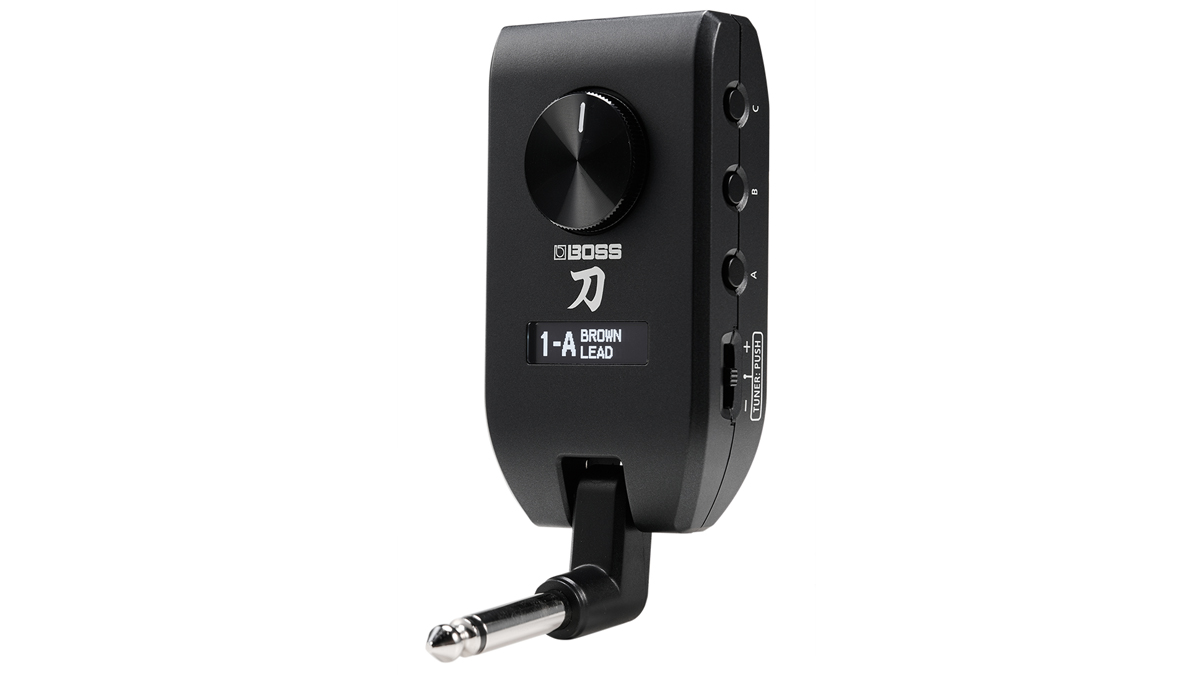
- PRICE: $/£119
- ORIGIN: Vietnam
- TYPE: Digital modelling headphones amplifier
- DIMENSIONS: 45 (w) x 83 (d) x 25mm (h)
- WEIGHT (kg/lb): 067/0.15
- CASE: Plastic
- CONNECTIONS: Single instrument plug, stereo headphones jack, USB-C socket for desktop/charger connection
- CHANNELS: 30 slots organised in 10 banks of 3
- CONTROLS: Volume control, bank up/down/tuner switch, A/B/C patch select buttons, Bluetooth button, on/off button, stage mode select button
- FOOTSWITCH: Optional Bluetooth footswitch/expression pedal
- ADDITIONAL FEATURES: Bluetooth audio streaming, USB audio recording, integral tuner
- POWER: Integral rechargeable battery pack
- CONTACT: Boss
Nick Guppy was Guitarist magazine's amp guru for over 20 years. He built his first valve amplifier at the age of 12 and bought, sold and restored many more, with a particular interest in Vox, Selmer, Orange and tweed-era Fenders, alongside Riveras and Mark Series Boogies. When wielding a guitar instead of soldering iron, he enjoyed a diverse musical career playing all over the UK, including occasional stints with theatre groups, orchestras and big bands as well as power trios and tributes. He passed away suddenly in April 2024, leaving a legacy of amplifier wisdom behind him.
“Even standing with the guitars is tricky”: Ritchie Blackmore's health sparks concern after update from wife and musical partner Candice Night
5 lo-fi guitar chords to add to your progressions
“The rest of the world didn't know that the world's greatest guitarist was playing a weekend gig at this place in Chelmsford”: The Aristocrats' Bryan Beller recalls the moment he met Guthrie Govan and formed a new kind of supergroup
